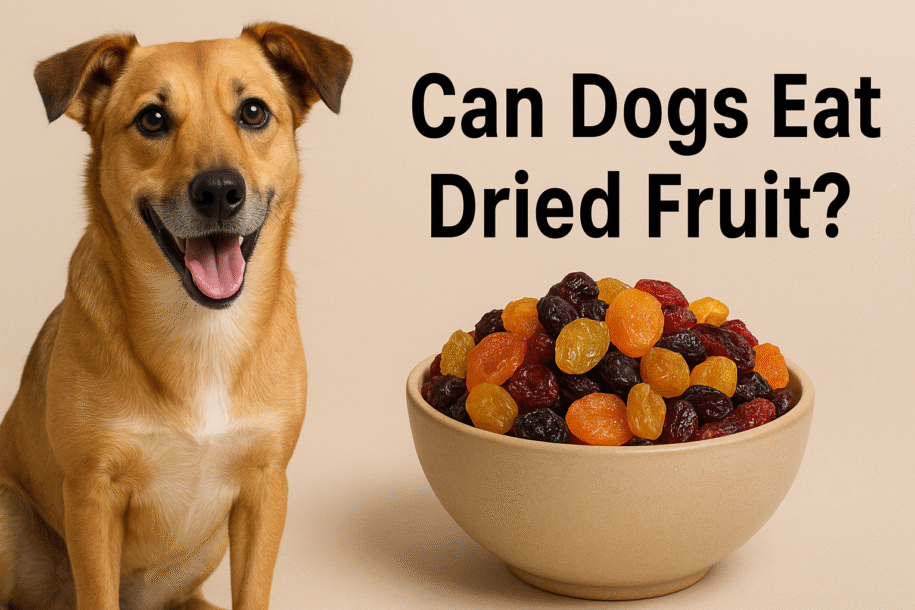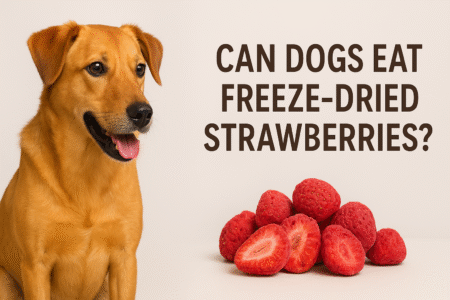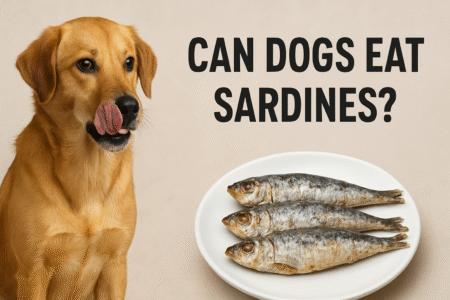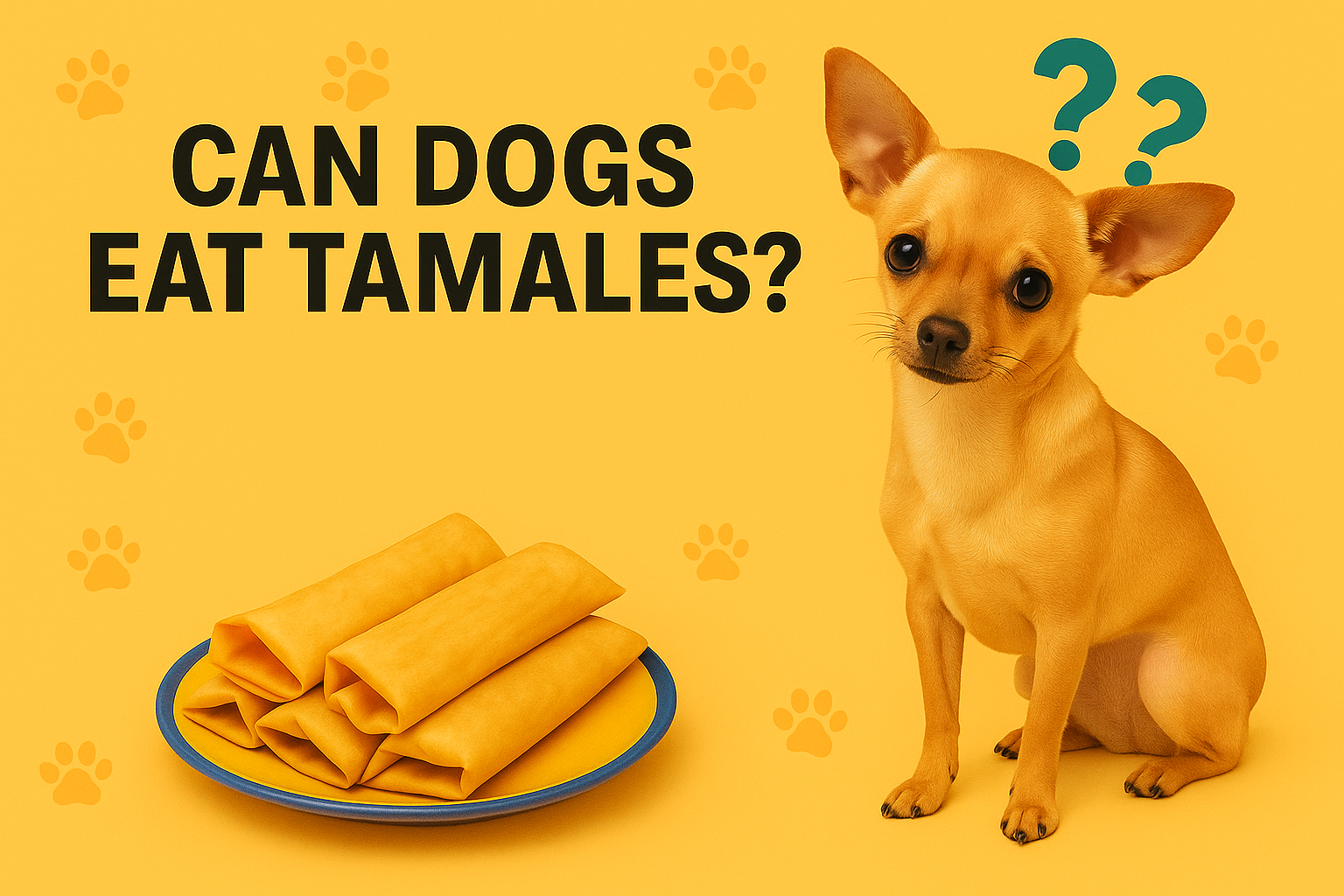No, dogs should not eat dried fruit because it can be dangerous. Dried fruit is often high in sugar and fat, which can lead to obesity and other health problems. It can also contain harmful chemicals.
While some safe dog foods include vegetables and fresh options, dried fruit can be tricky. Many dog parents may think it’s a healthy treat, but not all dried fruits are safe. Some, like raisins, grapes, currants, and figs, contain toxic compounds that can cause kidney failure and severe gut problems. Even small amounts of these can be dangerous. Additionally, store-bought dried fruit often has extra sugar and preservatives, which are bad for a dog’s digestive system and can lead to obesity.
If you’re interested in learning more about dried fruit and its effects on your dog’s health, check out this helpful article from Petmd for more details on the risks of feeding dry fruits to dogs.
If you want to include fruit in your dog’s diet, opt for safer choices like apples, bananas, blueberries, cantaloupe, mangoes, oranges, peaches, pears, pineapple, and cranberries. These provide essential vitamins and minerals that help in balanced nutrition. However, always avoid giving them seeds, as some contain cyanogenic glycosides, which can make dogs sick. A little bit of puree made in a blender or mixing small pieces into their food bowls can be a great way to add variety.
When offering anything new, always start small and watch for any trouble with their digestive functioning. If your dog accidentally eats toxic dried fruit, immediately contact a veterinarian or the Pet Poison Helpline to ensure their health stays in check.
What fruits can dogs eat?
Blueberries are high in antioxidants and low in calories. Kiwi – Like bananas, kiwi fruit is a good source of Vitamin C and potassium. Strawberries – strawberries offer great benefits, like fiber, and have a high water content – just make sure you remove the stems before giving them to your dog.

knowing Dogs’ safe foods is important. Since dogs are omnivores, they can enjoy both meat and plants, including fruits, as part of a balanced diet. However, not all fruits are safe—some can be toxic and dangerous for their stomachs. Luckily, there are plenty of cheap, easy options that make great treats for your pup. Some safe choices include Apples, Blueberries, Cantaloupe, Cranberries, Cucumbers, Mango, Oranges, Peaches, Pears, Pineapple, Raspberries, Strawberries, and Watermelon. These fruits offer vitamins while keeping your furry friend happy. Always check portions and remove seeds to ensure Dog’s Life care stays in top shape!
Dogs are omnivorous animals, meaning they can digest both plant materials and meat. While a high-quality, nutritionally complete commercial diet is necessary, some fruits can be a safe and fun way of supplementing your pet’s diet. However, not all fruits are dog-friendly, so always check with a veterinarian before feeding them. Some safe options include apples (without seeds), blueberries, and bananas. These can help with obesity and diabetes and even prevent bladder stones.
But remember, dogs should always be fed safe foods in moderation. Even natural treats can lead to health conditions if given in excess. Some fruits are toxic and should never be given, like grapes and cherries. Instead, focus on balanced choices that provide vitamins while keeping your dog healthy. Dog’s Life care is about making the right choices, and by consulting a veterinarian, you ensure your furry friend enjoys a happy and healthy dogs life care!
What Fruits Can Dogs Eat? A List of Good & Bad Fruits For Dogs
Dogs love to gaze at their owners while they are eating something delicious, making it challenging to resist offering them a bite. However, not all fruits are safe for dog consumption. Some fruits are a great snack for your pup, while others can be toxic and cause stomach problems like diarrhea. Canine health depends on feeding the right fruit, so knowing what’s healthy is important. Apples and bananas are good, but grapes are dangerous. The high sugar content in some fruits may lead to issues, so portion control matters. This comprehensive list provides suggestions to keep your puppy safe. If you have a question about serving the right fruit, this post is the perfect answer! For more on dog health and safety, check out WebMD for Pets.
Apples: A Perfect Snack for Dogs
An apple is an excellent choice for a dog’s lifecare, especially in warm weather. They are low in fat and a good source of fiber and vitamin C, making them perfect for senior dogs. You can find apples in many dogs’ safe foods, and they can be served as icy treats by freezing small slices. Always remove the seeds and core before feeding, as they can be harmful. Apples can also be the first ingredient in homemade dog snacks, adding natural sweetness and protein. Try offering frozen apple slices in the summer—they make a refreshing snack for your furry friend!
Beware of Avocado for Your Dog
Avocado may seem like a healthy choice, but it contains persin, a toxin that causes gastrointestinal issues like vomiting, diarrhea, and an upset stomach in dogs. While the flesh has some benefits for your dog’s skin and coat, it’s high in fat and may contribute to pancreatitis if given too much. The pit, leaves, and skin should be avoided as they can be toxic. If your dog accidentally eats it, owners should call their vet. For Dogs’ safe foods, it’s best to look for safer snack options and avoid avocado in Dogs’ life care. Dog’s lifecare shouldn’t risk it!
Bananas: A Healthy Treat for Dogs
Banana is a great choice as a low-calorie treat for dogs. It is high in fiber, potassium, and biotin, which support your dog’s health. Unlike some fruits, they’re part of dogs’ safe foods because they are low in cholesterol and copper. However, due to their sugar content, bananas should be fed in moderation and not as a main diet. A small piece can be a perfect treat for dog life care, ensuring they enjoy a tasty snack while staying healthy. Always follow Dog’s Lifecare guidelines and consult a vet if needed.
Blueberries: A Superfood for Canines
Blueberries are a popular fruit among humans, and they’re just as great for dogs! These little berries are packed with antioxidant properties that help prevent cell damage in canines. Many pet owners use them as treats during training since they’re small and easy to catch in the air. Plus, they’re a powerhouse of fiber, phytochemicals, and vitamins, making them a great addition to dog safe foods. You can even try adding them to yogurt for a tasty combination! If you’re looking for a healthy ingredient to include in your dog’slifecare, blueberries are a fantastic choice for overall dogs life care.
Cantaloupe: A Refreshing Treat for Dogs
Cantaloupe can be a great snack for dogs when given in moderation. This fruit is high in water and fiber, making it a refreshing choice, especially during summer. It’s a low-calorie option, but due to its sugar content, it should be limited for dogs with diabetes or those who are overweight. Freezing cantaloupe into cubes or balls adds extra enrichment, and since it’s packed with nutrients, it’s a safe and tasty treat when shared responsibly.
Are Cherries Safe for Dogs?
Cherries may look tempting, but they can’t be given to dogs without caution. While the flesh of a cherry is free from toxins, the pits, seed, and whole fruit contain cyanide, which is toxic and disrupts a dog’s blood oxygen levels. If a dog eats too many, you might watch for signs like trouble breathing, blue gums, or a turned demeanor—this could be an emergency. Your friend might also struggle with chewing if a cherry gets lodged in their throat. Always keep cherries out of reach, discard any fallen fruit in your yard, and use a dog-proof trash bin. If you have a cherry tree, make sure it’s in a secure area, as even a small amount doesn’t take long to cause harm. Kids might drop them unknowingly, so always be alert. A veterinary visit is needed if a dog eats them—especially if they show distress. To avoid risk, stick to formulated treats with safe ingredients instead.
Can Dogs Eat Cranberries?
Cranberries are safe for dogs to eat, but it’s important to feed them in moderation. This fruit is tart, so your dog may not like the taste, but some dogs enjoy the crunchy texture of fresh cranberries. If you opt to give them as treats, choose unsweetened, dried cranberries instead of sweetened ones, which are sold with added sugars. Dried cranberries in small amounts are usually safe, but large quantities could lead to an upset stomach. If you pick packaged cranberries, check the label, as they are often mixed with unneeded raisins, which should never be given to dogs. Whether to include cranberries in your dog’s diet is a common question, and the best way is to test with a few and see how they react.
Cucumbers: A Cool & Healthy Treat for Dogs
Cucumbers are an excellent snack for dogs, especially in the summer, as they’re full of water and provide hydration to keep your dog cool. They can be a great option for overweight dogs since they’re loaded with nutrients but have no unnecessary carbohydrates. Packed with vitamin C, vitamin K, biotin, magnesium, potassium, and B1, they also support your dog’s life care. For extra fun and enrichment, try serving cucumbers in thin slices or freeze them for a cooling crunch.
Mango: A Sweet & Juicy Treat for Dogs
Mango is a tropical fruit that can be a great and occasional treat for your dogs, but there are some things you need to know first. This superfood is packed with vitamins, including beta-carotene and alpha-carotene, and is high in potassium and other essential nutrients. While its juicy, sweet flavor makes it tempting, the mango pit must be removed before feeding, as it can be hazardous and a choking risk. Also, the sugar content is high, so only feed small amounts to avoid health issues. Some dogs might struggle with the chewy texture, and it can get messy, so always cut it into pieces for easy eating.
Can Dogs Eat Oranges?
Oranges can be an excellent treat for dogs, but not all dogs enjoy their strong scent or juicy texture. If your pup is a fan, ensure the orange is peeled, as the oils in the peel can be too strong for sensitive noses. The flesh is high in vitamin C, potassium, and other nutrients, making it fine in small quantities. However, vets recommend tossing only a few pieces, as too much may turn their stomachs off. Some dogs do eat them happily, while others may just dislike the taste. If your dog has access to whole oranges, ensure they are not tossed their way, as swallowing large pieces or the peel can be harmful.
Peaches: A Fun & Safe Summer Treat for Your Dog
A ripe peach can be a great snack for your dog, especially on a hot summer day. Fresh or frozen, a small slice can be a safe treat, packed with fiber and vitamin goodness. However, always cut them properly and remove the pit, as it contains cyanide and is dangerous for dogs. Serve in small amounts to avoid tummy troubles, and use during training as a rewarding snack. A fresh peach can also be a source of hydration and a fun way to cool down. Just ensure it’s for dogs only—no added sugars or syrups!
Can Dogs Eat Pears? A Safe & Functional Treat
Yes, dogs can eat pears, but there are some things to keep in mind. Pears are a fresh and safe snack when given in small amounts. They are high in fiber, vitamin C, and vitamin K, making them a functional treat for your dog. However, you should always remove the seeds and pit, as they contain harmful ingredients. Also, because pears have sugar, only give cut-up chunks to your dog in moderation. If your pup enjoys the bite of fresh pears, you can add them to their diet, but just as an occasional treat. Too much sugar isn’t good for dogs, so be mindful of how often you offer them treats. Copper is also present in pears, which supports your dog’s health, but again, moderation is key!
Pineapple: A Tropical Treat for Your Dog
If your dog loves a sweet snack, choose fresh pineapple instead of sweetened or canned ones, as they contain too much sugar. Pineapples are a natural source of fiber, bromelain, and protein, which can help with digestion. However, dogs should only eat a few pieces because they are high in sugar. The outside of a pineapple is tough and should not be fed to dogs. This tropical fruit is full of enzymes that support their health, but it should be an occasional part of their diet, especially as treats. Pineapples grow on islands and are best served in small, bite-sized chunks.
The Power of Pumpkin for Dogs
Pumpkin is a superpower fruit that offers many benefits for your dog’s digestive system. It is packed with fiber, which can help with constipation or diarrhea. If you want to feed pumpkin to dogs, always choose plain canned pumpkin or fresh pumpkin flesh without the peel. You can also give roasted pumpkin as a treat. It works great as supplement to support gut health, and its antioxidant properties should not be ignored. Just make sure not to overdo it, as too much can cause an upset stomach.
Raspberries: A Great Treat in Moderation
Raspberries are a great fruit choice for your dog, especially for senior dogs. They are low in sugar and packed with fiber, making them safe as occasional treats. These berries contain vitamin C and anti-inflammatory properties, which can help with aging joints. However, they also have occurring xylitol, so you should only feed them a limited amount—no more than a few small ounces. Whether fresh or frozen, a raspberry here and there can be a great snack, but always serve them in moderation to keep your pup healthy and happy.
Strawberry Treats for Your Dog
Dogs can enjoy a strawberry as a tasty and healthy treat, but always in moderation to avoid too much sugar. Strawberries are high in fiber, which supports digestion, and they contain an enzyme that may help keep teeth clean. For extra fun and enrichment, try offering frozen strawberries—they make a refreshing snack, especially during training sessions!
Are Tomatoes Safe for Dogs?
If your dog loves to explore the garden, you should know that a ripe tomato is generally safe for them to eat in small amounts. However, tomato plants contain solanine, a toxic substance that can make dogs sick if they consume a large quantity. Green tomatoes and unripe tomatoes should be avoided as they have higher levels of solanine. While a ripe tomato contains antioxidants that may help prevent some diseases, it’s best to skip feeding it too often. Always watch their reaction, and if your dog shows any unusual symptoms, skip the tomato and consult a vet.
Watermelon: A Fun Summertime Treat for Your Dog
Watermelon is a great choice for your dogs, especially on hot summertime days, as it provides essential hydration with 92% water content. It is also packed with vitamin A, vitamin B-6, and potassium, which are important for their health. To keep it safe, always remove the rind, and only feed the flesh in bite-sized chunks. A frozen watermelon treat can also be a refreshing way to cool them down. But remember, their first experience should be in moderation to avoid stomach issues.
Pro Tip:
Does your dog constantly get into things they shouldn’t? The right coverage ensures you’re prepared for unexpected vet expenses so you can focus on your pet’s well-being, not the bills.
What fruits are not good for dogs?
Some fruits can be dangerous for dogs, so you should never feed them certain types. For example, Avocado contains persin, a toxin that can make dogs sick, causing them to throw up or have diarrhea. The size and breed of your dog may affect how badly they react, but it’s always best to avoid it.

Grapes and raisins are highly toxic, and research has confirmed that even a small amount can be fatal, leading to sudden kidney failure. Cherries are also harmful because their pits have a trace of cyanide, and if a dog chews or swallows them by accident, the seed releases poison. Tomatoes are mostly safe when ripened, but the green parts of the plant contain solanine, which is dangerous for dogs to eat. If they consume a large amount, it can cause serious issues, so it’s best to be careful.
Taking Dogs’ life care seriously means knowing which fruits should be avoided to keep our four-legged friends safe. Some fruits may seem safe but can be highly dangerous if consumed in high quantities. Cherries are one such example—while the cherry flesh itself isn’t the worst, the pits, stems, and leaves contain cyanide, which is poisonous and can even be fatal to dogs. Just a few cherry parts could put a dog’s health at serious risk.
Another fruit to avoid is grapes, as they are highly toxic and can cause serious kidney damage. Even a small amount can lead to acute and sudden failure, which can be fatal if not treated in time. Since there’s no way to tell how much is “too much” for each dog, it’s best to keep grapes far away from your four-legged friends. Always check if a fruit is suitable before sharing, as their health depends on responsible choices.
What different seafood can your dog eat?
Yes, dogs can eat fish, and it can be a great addition to their diet. Fish is rich in protein and low in saturated fats, making it highly digestible for dogs. Many commercial dog foods already include fish as a key ingredient because it helps maintain a nutritionally balanced meal. If you’re considering a home-cooked diet, adding properly cooked fish can be beneficial for your dog’s health. However, raw or improperly prepared fish can cause harm, so always ensure it’s free from bones and cooked thoroughly. For more detailed information on the benefits and precautions of adding fish to your dog’s diet, you can read this guide from the American Kennel Club.

For dogs with food allergies or dietary intolerances, fish serves as a novel protein source, making it a common choice in prescription diets. Some veterinary nutritionists recommend fish for specific medical conditions, as it is packed with essential vitamins and minerals that support a dog’s life and well-being. If you’re considering switching your dog’s diet, consult a veterinary nutritionist to ensure it meets their specific needs. Prioritizing your dog’s life care means making informed choices about their meals, whether it’s commercial or home-cooked food. When it comes to dogs’ life care, choosing the right seafood is key. Not all aquatic critters are safe for your furry baby. Certain species of fish, like tuna, mackerel, and sea bass, can have heavy metals and toxins that accumulate over their lifetime, making them unsafe. Since larger fish have bigger bodies, these harmful substances get concentrated in tissues, leading to severe illness in dogs and even humans. The same rule applies to shorter-lived and longer-lived fish—safer choices are smaller specimens with lower mercury levels.
To avoid health risks, opt for fish under 6 inches in length, such as sardines, anchovies, and herring. These are rich in omega-3 fatty acids, which improve coat health and support heart disease prevention, potentially increasing longevity. However, proper preparation is crucial—ensure the bones are clean to reduce safety risks like brittle bones piercing the intestine wall or causing a choking hazard. Also, watch the fat content, as excessive amounts can affect energy levels and cholesterol. A good indicator of freshness is the smell—avoid anything fishy, ammonia-like, or rancid, as it can be dangerous. Shellfish like shrimp and clams can be included, but always cook them properly to remove harmful bacteria.
Faqs:
Can dogs eat dried fruit seeds?
Dried fruits, nuts, and seeds are generally toxic to dogs. These foods often contain cyanogenic glycosides, which can cause poisoning. If your dog has ingested any of these foods, contact a veterinarian immediately.
Can dogs eat dried fruit juice?
No, dogs should not eat dried fruit juice; while small amounts of fresh fruit can be okay for dogs, dried fruit juice is highly concentrated in sugar and should be avoided as it can be harmful to their health.
Can dogs eat dried fruit everyday?
Dogs are carnivores and as such, they have a difficult time digesting plant-based food. This means that dried fruits, nuts and seeds are not good for them. While humans can enjoy the health benefits of these foods, dogs can suffer from serious health problems if they eat them.
Can dogs eat dried mango?
Yes, dogs can eat dried mango, but only in small quantities as a treat, as the drying process significantly concentrates the sugar content, making it less healthy than fresh mango; always remove the pit and skin before feeding it to your dog and consider consulting your veterinarian before introducing any new food to your pet’s diet.
10 best fruits and vegetables for dogs?
Healthy fruits for dogs
- Broccoli. …
- Cucumber. …
- Pumpkin. …
- Grapes, raisins and currants. …
- Avocado. …
- Wild mushrooms. …
- Onions, garlic and leeks. Onions, garlic, chives and leeks (also known as alliums) contain toxins which can cause damage to red blood cells. …
- Tinned fruit and veg. Be mindful of feeding your dog tinned fruit and veg.
Can dogs eat strawberries?
Yes, dogs can eat strawberries in moderation as a treat. Strawberries are a healthy snack for dogs, but they contain a lot of sugar, so you should avoid giving your dog too many.














Leave a Reply